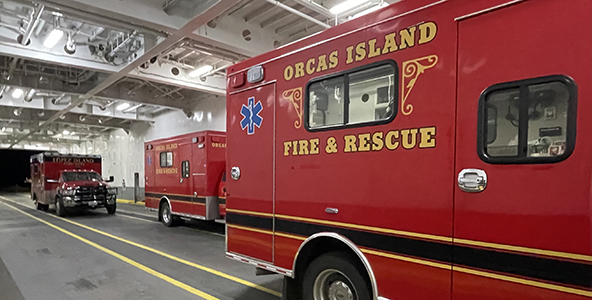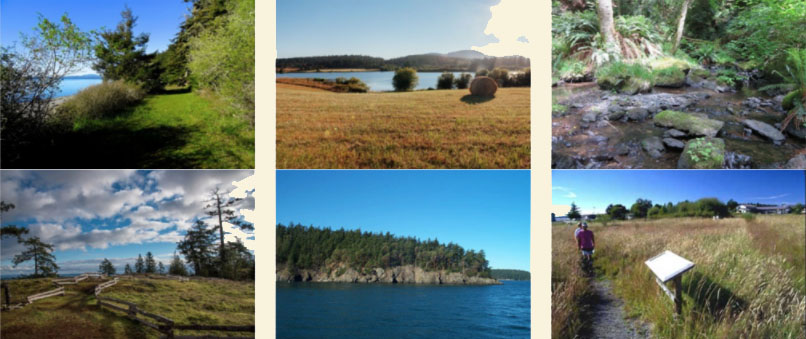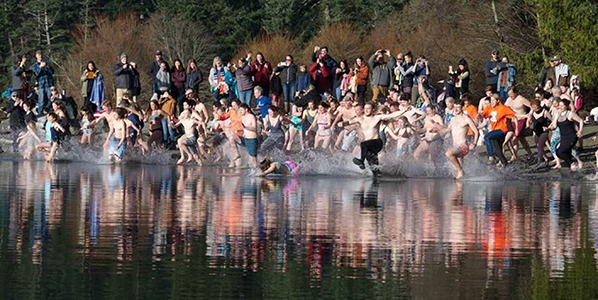||| FROM MIKE CARLSON |||
34 years ago the Land Bank presented a creative solution to the problems facing San Juan County at that time. Land development and the passing of a generation of legacy landowners meant ownership turnover for a large percentage of the County’s land base. Few options or outside resources existed for landowners or neighbors looking to preserve land.
Since its beginning, the Land Bank has purchased 5000 acres and controls an additional 2300 acres through easements. That is a remarkable conservation legacy for San Juan County. The Land Bank has fulfilled its mandate.
San Juan County is different now than it was 34 years ago. The SJC Critical Areas Ordinance and Shoreline Master Plan ensure that sensitive areas are protected. As the Land Bank buys more land, it plays a part in making land out of reach for middle class working families by absorbing the supply of available land for housing.
The Land Bank is exempt from property taxes so private property owners absorb the tax burden shift to their own property taxes.
In 2023, exclusive of any land purchases, the Land Bank spent over $3,000,000 on administration, staffing, stewardship management and site enhancements. By comparison, in 2023, the County Parks Department spent $1,900,000 to manage the county parks which serve more visitors.
The Land Bank has morphed into a permanent and expensive bureaucracy that will only continue to expand. Please vote NO on proposition 1.
**If you are reading theOrcasonian for free, thank your fellow islanders. If you would like to support theOrcasonian CLICK HERE to set your modestly-priced, voluntary subscription. Otherwise, no worries; we’re happy to share with you.**









Mike, I think you you are partly right, but not, I think, right enough to kill this levy.
Where I agree with you is that at some point, there has to be an ultimate goal and at some further point, there needs to be recognition that that goal has been reached. As a local but unfamiliar with the Land Bank’s internal goals and policies, it appears to me that the Land Bank is operating on an opportunistic basis. Nevertheless, the real estate market being what it is (everywhere), operations are more or less forced in that direction.
Here is where I don’t agree with you:
First, unaware though I am of the Land Bank’s ultimate goal, I don’t think that it has reached it though I gather that you do. A public statement of that goal would benefit both of us.
Second, tying up land as natural area does not burden the remaining acres as much as represented. Those acres will not be sewered, receive water service or paved all of which costs are eliminated from municipal and personal budgets. Paul Dossett recently wrote in the Journal in opposition to the Land Bank Levy, and this is where I think his opinion fails to balance.
Third, those acres provide ecological services whose value is only now being calculated, but an obvious one important to us all is ground water recharge.
Fourth, the matter of housing depends upon the income level of the buyer. Large tracts of the type sought by the Land Bank are not bought by people who need housing, but rather by people for whom San Juan County is a seasonal refuge from state income taxes. Those who need housing and can’t afford it are not so impacted by forest, prairie and waterfront ecosystem preservation. They are impacted by the need for “close in” housing as a large percentage of these people work in urban areas and/or appreciate having municipal water and sewer systems and particularly for those of us over 65 years of age whether or not they still work, proximity to health facilities.
In summary, I think your opposition to the levy is premature.
I may be wrong, but in my personal observation, County Parks seems to be in a holding pattern of just maintaining the current state of parks they operate. Meanwhile, the Land Bank has created many new recreational sites in the past year – new parking lots, new trails, restoration and opening of entire new preserves – not to mention the environmental stewardship work they take part in. Given that high level of activity, it makes sense why the Land Bank would be spending more money – they’re getting things done! I am grateful for the ever expanding natural space access options they create. Money well spent!
As a vocal Conservation Land Bank supporter I have also been exploring the possibilities of multiple use of some parcels for preservation, farming, solar and affordable housing. The LB expertise and REET funds at hand must be creatively employed. The several examples of collaboration to these ends include the Argyle lots in Friday Harbor, farmland preservation like Coffelt, Three Sisters etc and more rercently the lease of 30 acres in Beaverton Marsh to the Friday Harbor Grange for community garden plots and other food production.
i agree that the acquisition of more of the existing 7,400 privately owned parcels county-wide should continue but with more than scenery, trails and fresh water and shoreline in mind. Eventually, as both Mike and Bill say, we must define a decision point about when enough is enough and downshift into low key stewardship of these public lands.
I believe that one more cycle of 12 years is probably necessary to build in low intensity recreation infrastructure in appropriate preserves and allow legislative sausage making to strengthen the affordable housing REET and delink it from the Land Bank process. I do think that the new strategic plan and continued public pressure for collaboration to help address crying needs for land for other important social needs changes what was an “opportunistic” purchase of undeveloped large parcels.
But at this juncture we would be incredibly foolish to undercut the as yet” incomplete” land preservation progress and destroy the critical funding for affordable housing construction at the end of 2026 as we are hundreds of units behind on each main island.
I want to thank Bill Appel and Steve Ulvi for speaking to the other side of Mike Carlson’s argument. But beyond that, some of Mike’s misrepresentations need a factual response:
“The SJC Critical Areas Ordinance and Shoreline Master Plan ensure that sensitive areas are protected.” Environmental regulations like the Critical Areas Ordinance and the Shoreline Masterplan have added needed protections for vulnerable areas of our environment. The Land Bank’s purpose is different, and broader. It preserves:
large, contiguous areas of wildland and wildlife habitat
treasured scenic viewsheds and areas for public recreation
farmland for local farming families, and prevents it from being turned into estates
and, yes, it seeks to secure opportunities to open up the Islands’ private shorelines to the public.
These are values for Islands residents that are not protected by private property regulation.
Mike contends that the Land Bank “plays a part in making land out of reach for middle class working families by absorbing the supply of available land for housing.” Far from it. Most of the property the Land Bank seeks to acquire is in rural and resource conservation areas zoned for large-acreage estate lots, not higher density development for middle class and working islanders. In reality, it is the land and housing market driven by wealthy second-home owners–now 40% of our housing stock–that’s keeping housing opportunities out of reach of working Islanders. In fact, our support for the additional 1/2% Affordable Housing REET has generated $13 million and built 132 affordable units in the past five years–Housing located where it should be. Natural land preservation and affordable housing should balance and complement each other. That’s why every affordable housing organization in the County has endorsed the REET renewal.
“The Land Bank is exempt from property taxes so private property owners absorb the tax burden shift to their own property taxes.” In fact, he Land Bank’s property tax impact is negligible. The Land Bank’s 5,000 acres represent only about 4 1/2% of the County’s land. It’s taxable value is less than 1/2% of the County’s tax base–equivalent to $2 / $100,000 on your property tax bill. Stewardship of the Islands’ conserved wildlands is supported by property sales, not property taxes; but if the one-time REET is not supported, those costs would fall directly on taxpayers.
Finally, Mike’s contention that the Land Bank has become a “permanent and expensive bureaucracy,” is simply untrue. The Land Bank is an extremely slim and efficient organization–13 employees in total. That’s generally one Land Steward and one Field Assistant in each of our districts, covering all of the Land Bank’s 39 preserves. That $3 Million goes to stewardship expenses–yes, staff salaries, preserve openings and natural restoration and access improvements like hiking trails–and represents more than half of the Land Bank’s current budget. Real administrative expenses are about $360,0000–only 7% of the budget.
The Land Bank’s acquisition of new properties will continue as long as Islanders agree that there are still natural lands and values to protect and support the REET. That is in some ways opportunistic, in that we have to wait for those properties to become available. But it is also strategic. The Land Bank has a very intentional screening process to target the most important areas for future acquisition. You can learn more about this by attending the Land Bank’s Community Conversation on next Thursday, October 24th (watch for the notice).